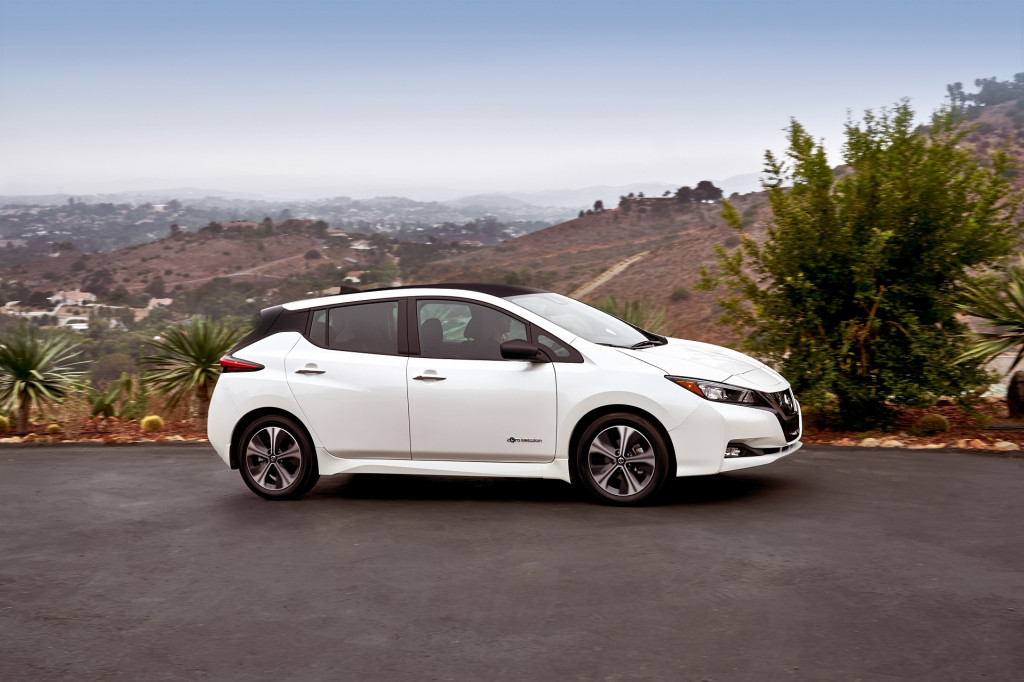Beginning next April, buyers of General Motors’ electric vehicles and plug-in hybrids won’t be getting the same break on their purchase as those who buy those vehicles from any other brand.
Any other brand but Tesla, that is. GM has confirmed to Green Car Reports that it will reach 200,000 deliveries of vehicles eligible for the federal electric vehicle tax credit by the end of this quarter.
The $7,500 tax credit for electric vehicles—with amounts reduced for some plug-in hybrids—was originally passed during the Bush administration, as part of the Energy Improvement and Extension Act of 2008.
DON'T MISS: What happens to electric-car sales when tax credits sunset?
A phase-out period was built into the credit, as overseen by the IRS. The second quarter after the quarter in which an automaker hits the 200,000 mark, buyers can claim 50 percent of the full credit amount. Two quarters after than, the amount goes down to 25 percent of the full amount. Following that, vehicles sold by the automaker wouldn’t be eligible for any tax credit.
Buyers of the both the Chevrolet Bolt EV electric car and the Chevrolet Volt plug-in hybrid, for example, will receive $3,750 starting next April, or $1,875 starting next October.
The ceiling refers to the number of qualifying vehicles, manufactured by a particular company, that have been sold for use in the U.S. Not all buyers of eligible vehicles will actually claim the credit—if they had no income, for instance—but that’s not factored into the ceiling.

2018 Nissan Leaf
After GM, Nissan is likely next. Recent roundups place them at about 125,000 qualifying sales. Although with a lack of plug-in hybrids in its lineup and the Nissan Leaf on track for less than 20,000 annual sales it will likely take three more years.
CHECK OUT: After Tesla's federal tax credits expire, which electric car would you buy?
That pace could be quickened by an extended-range version of the Leaf expected to go on sale next spring and an all-electric crossover that joins the lineup potentially as soon as late next year.
With the Prius Prime outselling the Chevy Volt, Toyota is also catching up and could hit that ceiling a year or two after Nissan.
Audi plans to make just 20,000 e-tron crossovers annually, and while Volkswagen is aiming for high volume with its I.D. electric vehicles, based on its global MEB architecture, the first one won’t arrive in the U.S. until 2020. Likewise for the Mercedes-Benz EQC electric crossover—although Mercedes-Benz intends to up its sales of plug-in hybrids, badged EQ Power, in the meantime.
One other surprise is that BMW, one of the first entries to the electric-vehicle segment, is surprisingly far from hitting the tax-credit ceiling. It remains below 80,000 qualifying deliveries, based on several tallies.
READ MORE: Congressional Democrats file bills to extend federal EV tax credits
GM was a strong advocate in favor of keeping the tax credit during this year’s tax overhaul, and it emphasized the credit’s place in helping keep the U.S. an electric-vehicle leader and allowing a level of affordability.
“We feel the tax credit should be modified so all customers continue to receive the full benefit,” said Jeannine Ginivan, GM’s public policy spokesperson. “We look forward to working with members of both the House and Senate to find a bipartisan solution that works for everyone.”
While it’s too early to tell where that effort will go, both carmakers and shoppers may have to contend with a pricing landscape that’s increasingly uneven for the foreseeable future.













